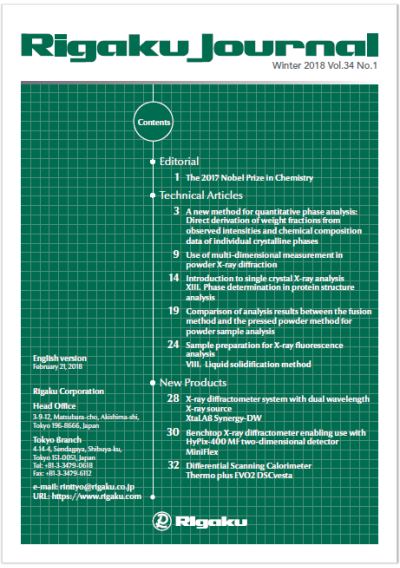In characterizing multi-component materials, constituent crystalline phases are first identified, and their relative abundances are quantified, in general, as a second step. Techniques of quantitative phase analysis (QPA) using the X-ray powder diffraction method have been used widely for materials characterization in research and development as well as in quality control of industrial products. Various techniques for QPA have been proposed since about 80 years ago. At present, certain techniques are specialized for QPA of specific materials, such as monoclinic-tetragonal Y-doped ZrO₂, α–β type Si₃N₄ etc., while other techniques have been used widely for QPA of general materials. In the latter category, the internal standard method using calibration curves, the Reference Intensity Ratio (RIR) method and the Rietveld method may be listed as major QPA techniques. As is well known, the internal standard method requires experimental procedures to draw the calibration curve, while the accuracy of the method in QPA is considered to be relatively high. Since single peak intensities and database-stored RIRs are used in the RIR method, it is less of a burden to conduct the experiment and data analysis, while the accuracy in QPA depends simply on the accuracy of the measured single peak intensity. The Rietveld method(8) uses crystal structure parameters in calculating powder diffraction patterns for the least-squares fitting, and this structure-constrained model exhibits its advantage in QPA using the intensity data of complicated powder diffraction patterns like those of cements. Moreover, intensity data of total diffraction patterns are used, and the accuracy in QPA is also considered to be relatively high. The Rietveld QPA technique, however, cannot be applied when crystal structure parameters are not available, and some techniques like the PONKCS (Partially Or Not Known Crystal Structure) method(12), which compensate for the disadvantages of Rietveld QPA, have been proposed. The PONKCS method can be applied to mixtures consisting of known structure and unknown structure components.
Hideo Toraya

